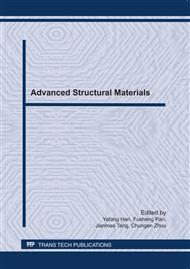p.427
p.432
p.438
p.448
p.454
p.461
p.468
p.474
p.482
Study on Foaming Behavior of Microcellular PP/Inorganic Powder Composites
Abstract:
The modified inorganic powder material (one-dimensional MgSO4 whisker, two-dimensional Mica, zero-dimensional SiO2 ) was added into polypropylene with 5% wt. The microcellular foam PP composite was prepared under the condition of twice-open mold. According to the principle of interfacial adhesion,Liquid-solid interface free energy of PP composite system was calculated by means of the contact angle. Based on heterogeneous nucleation theory, foaming behavior of microcellular foam material was characterized quantitatively by interfacial behavior. The effects of different inorganic powder material on foaming behavior were analyzed in microcellular foam polypropylene. The results indicated that the minimum nucleation energy barrier of PP/Mica composite system is 46.94N.mwith the nucleation rate in 5.53×1011. After foaming, the cell diameter of the composite is 22.1μm and the cell density is 6.92×108 months/cm3.
Info:
Periodical:
Pages:
454-460
Citation:
Online since:
June 2011
Authors:
Price:
Сopyright:
© 2011 Trans Tech Publications Ltd. All Rights Reserved
Share:
Citation:


